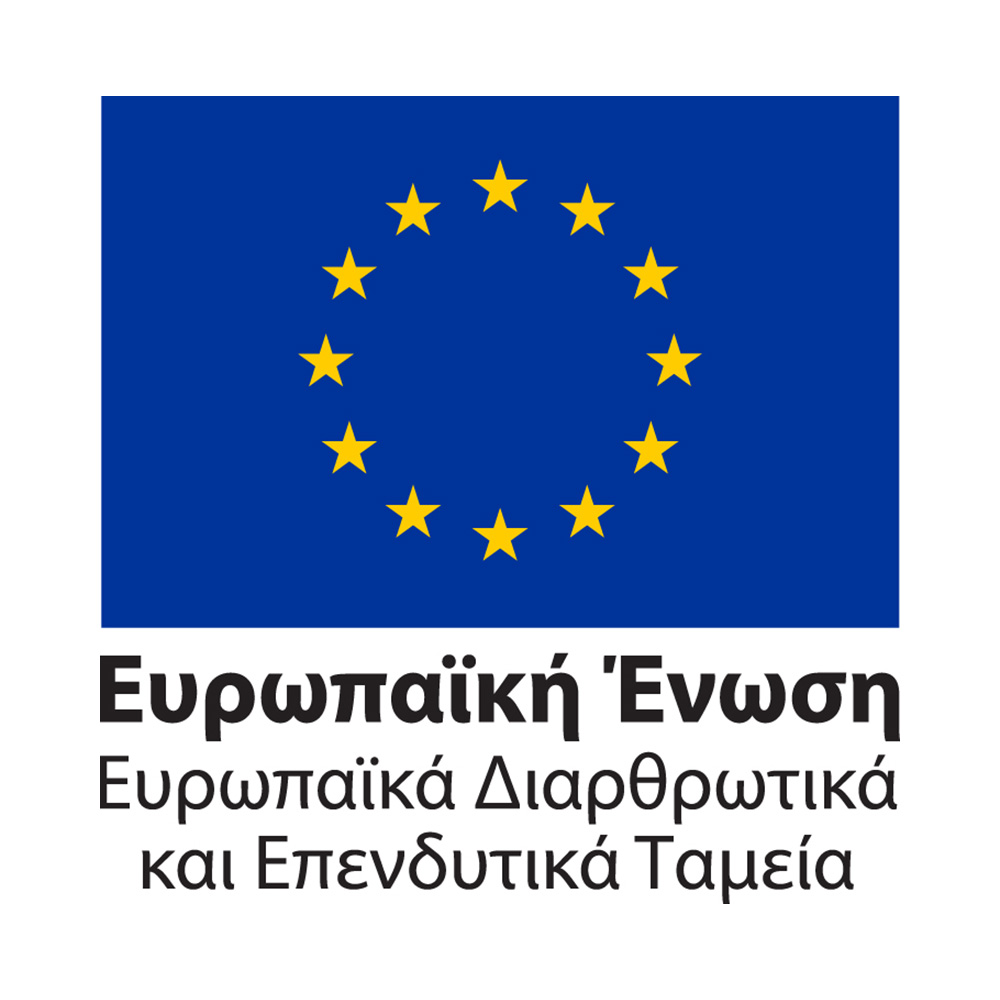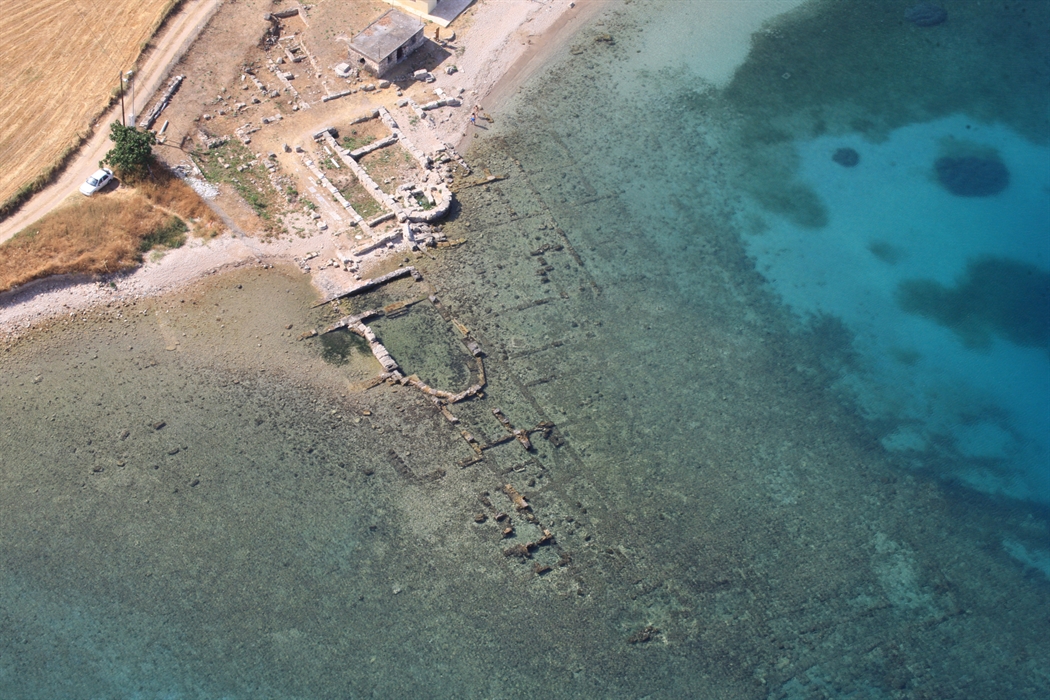The ancient port of Cenchrea
It was located on the Saronic Gulf and, together with the port of Lechaion on the Corinthian Gulf, constituted the metropolitan ports of ancient Corinth.
Temples, luxurious public buildings, piers lined with moored ships, goods coming and going, sailors, slaves, merchants and porters, conversations in various languages and dialects. And the ever-present horizon of the Saronic Gulf: So was the great ancient port of Cenchreae.
It was one of the two metropolitan epineia of ancient Corinth and its history was linked to that of Lechaios in the Corinthian Gulf.
The ports took their names from Lechis and Cenchria, the twin mythological sons of Poseidon and Pirini, daughter of the river god Acheloos.
The development of the port of Cenchrea in the Archaic period, between the 7th and 6th centuries, was impressive. Τhe Diolkos on the Isthmus played an important role in its commercial development. It flourished in Roman times (late 6th/early 7th century) and its commercial use was continued over the centuries.
Kekchrees (today Kekhries) was partly a natural harbour - with capes to the north and south - and partly man-made. A settlement was gradually built to the west of the bay, where remains from the Classical and Hellenistic periods have been discovered.
The port was divided into a military and a commercial section. The latter became a busy hub in southeastern Europe. As with Lechaios, pioneering methods were applied to the construction of the various facilities. Two horseshoe-shaped breakwaters were built at the end of the headlands, some 30 meters above the seabed. The ends were only 20 meters apart.
The modernized port facilities are considered to have taken their definitive shape under the Antonine dynasty of Roman emperors (96-191 AD), and the architectural remains found during excavations provide a fairly complete picture. Next came the construction of luxurious, richly ornamented public buildings.
The region continued to flourish in late Roman times, with heavy commercial traffic. In 365, after a terrible earthquake, the port buildings were severely damaged. It is thought that it was as a result of this event that the Temple of Isis was rebuilt, featuring magnificent wall decoration with coloured glass (the precursor of stained glass). Thanks to conservation work, archaeologists were able to recover 87 artistic compositions. These can be admired at the Archaeological Museum of Isthmia.
The excavations.
Over the years, the site has seen its fair share of earthquakes and subsidence. As a result, the water level has risen two meters and the harbour breakwaters are now submerged in the sea. The Roman buildings are visible at sea level, and the ancient and classical buildings are underneath them.
The harbour has intrigued archaeologists since the 1960s when The American School of Classical Studies organised the first in a long line of archaeological excavations at the site. They spent 5 years here, and partially excavated the ruins. Archaeologists have also found a wealth of interesting objects here, and have uncovered Roman warehouses, shops and public buildings, as well as temples dedicated to Aphrodite and to the Egyptian god Isis and an Early Christian Basilica.
More recently, technology has “come to the rescue” and in 2012 the Danish Institute at Athens worked with the local archaeological service on underwater research, excavations and digital impressions of the ruins. An EU-sponsored project has also been under way since 2020, with the Corinth Ephorate of Antiquities carrying out work in the ancient port. There are also plans afoot to connect the harbour here to Lechaeum, the ancient harbour at Corinth, and to the Diolkos, a paved pathway which acted as a short cut for boats in much the same way that the Corinth Canal does in modern times.
The Roman cemetery
If you are visiting the ancient port at Cenchreae, it is well worth heading for the low coastal ridge to the north of the harbour where you will find an impressive Roman cemetery. This is not an official archaeological site so you are free to wander round and look at the underground chamber tombs (cut into the rock) and the cist graves. We can tell that there was an important settlement in the area during Roman and early Christian times as these graves date from the 1st to the 7th century A.D. The graveyard was discovered by the Hellenic Archaeological Service, and the American School of Classical Studies has been carrying out detailed research here since 2002.
More info.
Did you know that
The ancient port of Cenchreae is located on the coast, east of the village of the same name, next to the Isthmus-Ancient Corinth highway.
Location
Find the destination on the interactive map below.
Categories
Weather
Σχετικό περιεχόμενο χρηστών (UGC)
Ενημερωθείτε για ενδιαφέροντα θέματα γύρω από τον προορισμό μέσα από το περιεχόμενο των χρηστών μας
Newsletters
- About Us
- FAQ's
- Map
- Tourism Information Centers
- Disclaimer
- Sitemap
- Our Brand
- Media Room
- Add your Business
- Corporate
- MICE

Peloponnese. Greece beyond the obvious





Design and creation from Cosmote
Marinas and Moorings
Diving Centers
Get Inspired
- Media Gallery
- Peloponnese Travel Blog
- The Peloponnese in the Media
- Your Feedback
- Users' General Content
- Users' Local Products
- Users' Events Content
- Ask a Local
More
- My peloponnese vibe
- Our providers Network
- Destinations Map
- Weather
- Public Transport
- Frequently Asked Questions
- Useful Phones
- B2B
- Destination Statistical Data
- Contact

